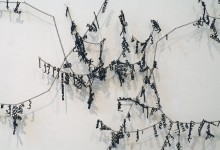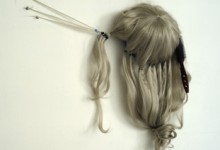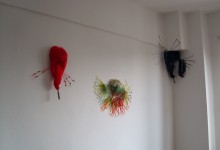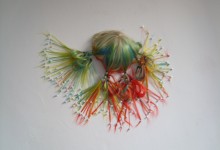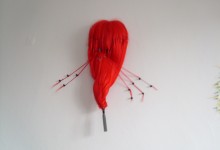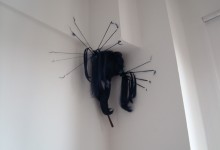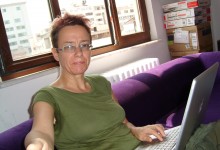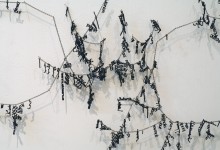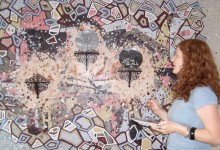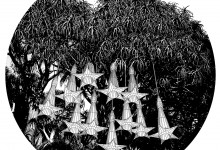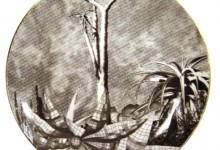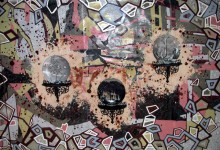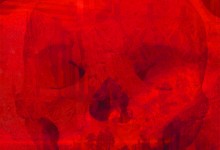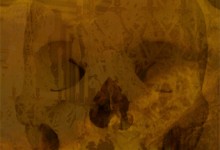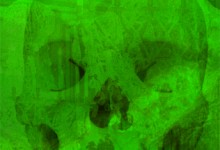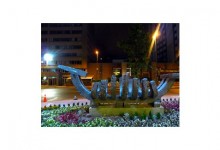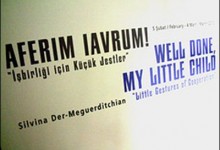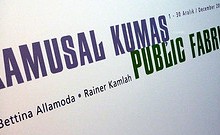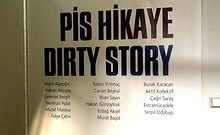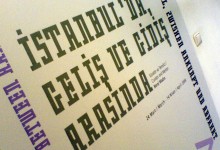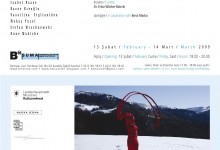CONTEMPORARY BAROQUE / ÇAĞDAŞ BAROK
3 SEPTEMBER/EYLÜL – 3 NOVEMBER/KASIM 2007
Artists: MARINA ZURKOW , MOLLY DILWORTH , YAEL KANAREK , EMMANUELLE GAUTHIER, URSULA ENDLICHER
Curator: Michele Thursz
The participants in this exhibition were chosen as a curator’s choice. In the first round of selection, I realized that I was interested in works that represented an ornamental or ornate quality. The natural tendency would be to connect the obvious definition of ornament and ornate to a traditional Byzantine or, in Western terms, a baroque, and the relationship to art and craft that came from Turkey. I have decided to go astray, and to instead address a broader public and look at what might be classified as Contemporary Baroque, a category with little to do with the historical definition. Here we look at the term baroque in relationship to the ornate use of new technologies in the artist studio and insociety. Artists today have pushed past the uses of one said medium and practice to create a personal position in what seemed to be a plastic culture. These works are visually pleasurable, with carefully designed aesthetics to convey complex structures of process, to create an object that can be read in many ways. On first sight the objects can be read as icons, with reference histories that are familiar and not apparently technologically driven, though each work is imbued with the possibilities set forth from technology. Each artist’s precise use of information and their artisanal skill in producing art objects laden with this information; result in what might be thought of as tangible hyper-objects. They are hyper in relation to information and also in their ability to transfer by means of virtual and physical states, histories, stories, and technical information. These seemingly decorative works can be read in many ways. They can be thought of linearly as narrative works or a viewer can fall into the proverbial rabbit hole that includes them into the overall narrative of this exhibition: Contemporary Baroque – extreme excess.
Bu serginin katılımcılarını bir küratör olarak seçtim. Seçimimin ön aşamasında süslemeci ya da süslü nitelikler taşıyan işlerle ilgilendiğimin ayırtına vardım. Doğal eğilim, süslemenin ya da süsün tartışılmaz tanımını geleneksel Bizans’a ya da Batı terimiyle bir Barok’a ve Türkiye’den çıkan bir el sanatına bağlamayı gerektirir. Ben yoldan çıkmayı yeğledim ve bunun yerine geniş bir kitleyi hedef alarak tarihsel tanımlama ile pek ilişkisi olmayan Çağdaş Barok olarak sınıflandırılacak bir şeye baktım. Burada barok terimine yeni teknolojilerin sanatçının stüdyosunda ve toplumda süsleme için kullanılması açısından bakılıyor. Günümüz sanatçıları geçmişin bu malzemesini ve pratiğini sözgelimi plastik bir kültürdeki kişisel duruşlarını yaratmak için zorluyorlar. Çok yönlü okunabilecek bir nesne yaratmak üzere çok titiz tasarımlanmış estetikle karmaşık bir işlem yapısı yansıtan bu yapıtlar görsel olarak sevimlidir. İzleyiciye tanıdık gelen gönderme öyküleri olan ve her biri teknoloji çıkışlı olanaklarla donatılmış olmasına karşın teknolojiden kaynaklanmış gibi görünmeyen bu nesneler ilk bakışta ikonlar olarak okunabilir. Her sanatçının bilgiyi titizlikle kullanması ve bu bilgiyi yüklenmiş sanat nesnelerini el becerisiyle üretmesinin sonucunda dokunulabilir hiper-nesneler olarak düşünülebilecek bir sonuç doğar. Bunlar bilgiye oranla ve fiziksel ve sanal durumların, tarihlerin, öykülerin ve teknik bilgilerin dönüştürülmesi bağlamında hiperdir. Bu görünüşte dekoratif olan işler birçok biçimde okunabilir. Doğrusal okumada anlatımcı işler olarak düşünülebilirler ya da izleyici herkesçe bilinen tavşan deliğine düşer ve bu uçtaki aşırılık, bu Çağdaş Barok onları genel anlatımcılığın içine alır.
Michele Thursz

